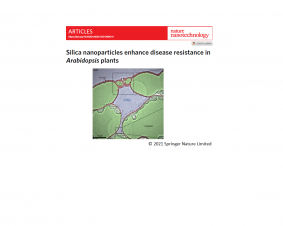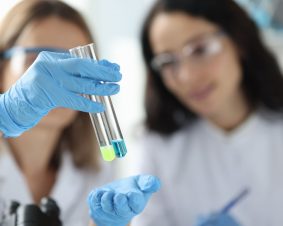 >
Spotlight October 2022: The titanium dioxide debate – why the current ECHA and EFSA hazard classification should be questioned
>
Spotlight October 2022: The titanium dioxide debate – why the current ECHA and EFSA hazard classification should be questioned
Due to various reports and scientific studies, titanium dioxide (TiO2)was also banned in Europe this year (2022) for use as a food additive with the indication that it could possibly be carcinogenic to humans. Although no case of tumour induction in humans has been reported since the use of this material in micro but also nano size in many products (included in paints as a white pigment for more than 80 years and permitted in foodstuffs in Europe since 2008) the European Chemicals Agency (ECHA) and the European Food Safety Authority (EFSA) have concluded that the evidence would be sufficient to apply a new classification.
However, the British Committee on Mutagenicity of Chemicals in Food, Consumer Products and the Environment (COC) and Health Canada disagree and continue to classify TiO2 as harmless because they consider the evidence from the submitted reports to be inconclusive and inapplicable.
The two here presented recent publications now comment on this new classification in Europe and come to the conclusion that this classification must be reconsidered, as there is no evidence for such a direct genotoxic effect of TiO2 in consumer products, would thus follow the British and Canadian example. The example of TiO2 makes it clear how important it is in the future to carry out toxicological tests exactly according to protocol and thus produce high-quality and comprehensible “FAIR” results (cf. Spotlights September 2022 and August 2021).
Original publications:
- Driscoll, K.E. (2022). Review of Lung Particle Overload, Rat Lung Cancer, and the Conclusions of the Edinburgh Expert Panel-It’s Time to Revisit Cancer Hazard Classifications for Titanium Dioxide and Carbon Black. Front Public Health 10, 907318
- Kirkland, D., Aardema, M.J., Battersby, R.V., Beevers, C., Burnett, K., Burzlaff, A., Czich, A., Donner, E. M., Fowler, P., Johnston, H.J., Krug, H.F., Pfuhler, S., Stankowski, L.F. (2022). A weight of evidence review of the genotoxicity of titanium dioxide (TiO₂). Regulatory Toxicology and Pharmacology, in press, journal pre-proof

Weitere Spotlights
Spotlight December 2021: Silica nanoparticles improve plant disease resistance
The resistance of plants to various pathogens is often increased in agriculture with various chemicals (“fertilizers”). A new direction is being taken with the use of nanoparticles. These can be sprayed on the plants. In the present study, the model plant Arabidopsis was used to investigate whether silicon dioxide nanoparticles (SiO2) can increase resistance to […]
Read moreSpotlight May 2021: Towards safe and sustainable innovation in nanotechnology: State-of-play for smart nanomaterials
The European Commission’s new Action Plan for a Circular Economy Green Deal, the new European Industrial Strategy as well as the Chemicals Strategy for Sustainability presented in October 2020 are ambitious plans to achieve a sustainable, fair and inclusive economy in the European Union. These strategies require that any new material or product must not […]
Read moreSpotlight August 2023: From principles to reality. FAIR implementation in the nanosafety community
In the August 2023 Spotlight, we present a paper that addresses the implementation of FAIR (Findability, Accessibility, Interoperability and Reusability) Data in nanosafety research. The authors introduce the new AdvancedNano GO FAIR Implementation Network (see also https://www.go-fair.org/implementation-networks/overview/advancednano/) established as part of the GO FAIR initiative. The paper highlights the AdvancedNano GO FAIR Implementation Network’s support […]
Read moreSpotlight September 2023: Fishing for raw materials with proteins
The so-called rare earth elements such as neodymium, dysprosium or cerium are elements that are of great importance for the energy transition; among others they serve as components of magnets in generators for electric power generation, act as luminescent materials in energy-saving lamps or as part of the car exhaust catalytic converter. The global production […]
Read more


